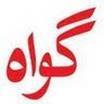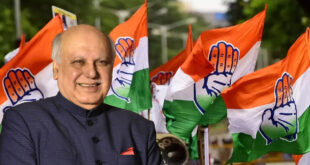By :Asad Mirza
The Media Ownership Monitor (MOM) project, a global research and advocacy effort to promote transparency and media pluralism at an international level, was initiated by Reporters Without Borders (RSF) in 2015. In India, it conducted the Media Ownership Monitor project together with Delhi based digital media company, DataLEADS.
The key findings of the Media Ownership Monitor and the detailed results of the study were made public at a function in New Delhi, today (29 May 2019). The key findings provide a vivid and interactive picture of the Indian media landscape by disclosing who owns and ultimately controls mass media.
“India is one of the biggest media markets in the world. However, the concentration of ownership of media shows that a handful of people own and control Indian media. Our research captures ownership structures and reflects on media pluralism. This is an important initiative to strengthen media ownership transparency which is fundamental to media’s credibility and its relationship with audiences,” said Syed Nazakat, founder and CEO of DataLEADS. “This project serves as a useful data and resource base for future media research in the country.”
“The MOM results in India show that a large number of media outlets does not necessarily translate into a pluralistic media landscape. With our research we created a database for everyone so that citizens can understand who owns and ultimately controls the media”, said RSF International president Michael Rediske.
RSF says on its website that MOM has been developed as a mapping tool in order to create a publicly available, continuously updated database that lists owners of all relevant mass media outlets (printed press, radio, television and online media).
The Media Ownership Monitor for India analysed 58 leading media outlets with the largest audience shares in India. The research revealed that the country’s print media market is highly concentrated. Four outlets – Dainik Jagran, Hindustan, Amar Ujala and Dainik Bhaskar – capture three out of four readers (76.45% of readership share) within the national Hindi language market.
Similarly, regional language media markets are highly concentrated. The findings show that, in each of those market segments, the respective top two newspapers concentrate more than half of readership shares or more. For example, out of five Tamil newspapers, the top two titles combine a readership share of two thirds. Similarly, the newspapers Eenadu and Sakshi manage to reach 71.13% of audiences in the Telugu language market. This trend has been observed and validated across all regional markets including Bengali, Oriya, Punjabi, Kannada, Gujarati, Urdu, Marathi and Assamese.
Most of the leading media companies are owned by large conglomerates that are still controlled by the founding families and that invest in a vast array of industries other than media.
In the radio sector, India’s state-controlled broadcaster All India Radio (AIR) has a nationwide monopoly on radio news. AIR is the largest radio network in the world covering a wide spectrum of languages and social-economic groups. In India, private broadcasters who run FM radio stations have the license to provide music and entertainment content, but are barred from producing news.
Audience data for India’s television market was not available as in India it is considered a corporate or industry secret, rather than a public resource. The relevant entity – Broadcast Audience Research Council (BARC) – according to DataLeads, declined to provide the data to the researchers despite repeated requests. BARC publishes the weekly impressions for top 5 Television broadcasters in news genre across 10 language markets (Hindi, English, Marathi, Telugu, Bangla, Kannada, Oriya, Assamese, Malayalam, Tamil) on its website. However, they reserve all rights on the data and communicated to the MOM team that the data cannot be used in any form without their prior approval which the team failed to get.
The study found that high level of ownership concentration comes as a result of considerable gaps in the regulatory framework to safeguard media pluralism and prevent media concentration. Neither specific means to measure nor thresholds to limit ownership concentration in print, television and the online sector are in place. The patches of regulation that exist do not seem to be properly implemented with the exception of the radio market where, however, India’s state-controlled broadcaster has a nationwide monopoly on radio news. Law in India does not regulate cross-media concentration either.
Some of the existing laws were adopted over a hundred years ago and continue regulating some aspects of media today, such as the Indian Telegraph Act of 1885, which laid the ground for a government monopoly over the broadcast sector. As a result and regardless of seeming diversity and plurality of supply, the Indian media landscape is comprised of highly concentrated market segments.
In the absence of overarching regulation on media, self-regulatory bodies like BARC, the only entity to measure television audience, caters exclusively to the interests of the industry that they represent. Although other self-regulatory bodies, such as News Broadcasters Association (NBA) and Indian Broadcasting Foundation (IBF) set the rules and effectively regulate the television market without a mandate to control market concentration can self-regulation be enough to maintain a healthy media market?
The MOM team collected the data for their research from publicly available sources such as Indian Readership Survey (IRS 2017). The data and information on ownership structures and shareholders of media companies and related individual owners was obtained from the website of the Ministry of Corporate Affairs (MCA). In addition, the research team sent out information requests to all investigated media companies, by registered mail and email, but none except for The Print have responded so far. The research is also based on a number of Right to Information requests (RTI) submitted to different State’s governments to collect data about public funds and advertising allocated to media.
There is some good news – MOM was able to find owners of almost all media companies through an openly available database provided by the Ministry of Corporate Affairs. The only company that remains unknown in terms of ownership and shareholding is Scroll Media Incorporation, registered in the US State of Delaware. Consequently, the shareholding structure of the company is not available.
Although transparency seems mostly achievable with some effort, it’s still important to note that ownership structures of almost all major media houses are characterised by highly complicated cross-shareholdings designed to either hide beneficial owners or to circumvent certain laws – or both.
India is a linguistically, culturally, ethnically diverse country and its media consumption habits are as diverse. To conclude, it is appropriate to say that India has a national media that covers its main Hindi heartland and some Hindi speaking states along with English media, that has a wider presence in terms of geographic reach, but not with large numbers. And then there is regional media – limited though in its own geography, but powerful nevertheless in terms of the audience that it reaches, and caters to.
For more information visit the MOM website: http://www.mom-rsf.org
Asad Mirza is a Sr journalist based in New Delhi. In his career spanning more than 20 years, he was also associated with BBC Urdu Service and Khaleej Times of Dubai. He writes on Muslims, educational and international affairs issues.
 Gawah (The Witness) – Latest News, Current Affairs, Politics, Sports, Religion, Literature, Technology, Education, National, Local – Hyderabad Telangana India World Fearless By Birth, Pristine by Choice – First National Urdu Weekly From South India – Latest News, Breaking News, Special Stories, Interviews, Islamic, World, India, National News
Gawah (The Witness) – Latest News, Current Affairs, Politics, Sports, Religion, Literature, Technology, Education, National, Local – Hyderabad Telangana India World Fearless By Birth, Pristine by Choice – First National Urdu Weekly From South India – Latest News, Breaking News, Special Stories, Interviews, Islamic, World, India, National News





